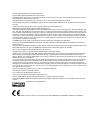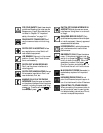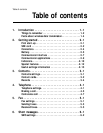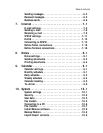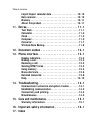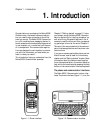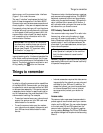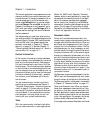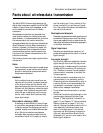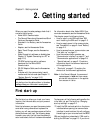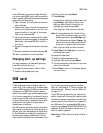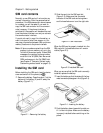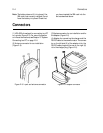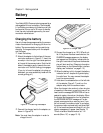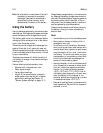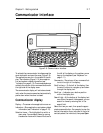
1-4 Facts about wireless data transmission
Facts about wireless data transmission
The Nokia 9000il Communicator employs the
digital data transmission capabilities of the GSM
network to send faxes, short messages, e-mail
and to establish connections with remote
computers.
Wireless data connections can be made from
most locations where your mobile phone oper-
ates. However, it is recommended that you move
the communicator to a location where the
strongest possible cellular signal can be obtained.
When the signal is strong, data transmission is
efficient. In general, you should not expect the
same performance from wireless cellular data
communications as from landline communica-
tions due to the inherent characteristics of the
cellular environment.
The following factors may impair digital cellular
connections:
Noise
Radio interference from electronic appliances
and equipment, as well as from other mobile
phones in metropolitan areas where mobile
telephones are prevalent.
Handover
As the mobile phone user moves from one
network cell to another, the signal strength
of the channel drops and the cellular tele-
phone exchange may hand the user over to a
different cell and frequency, where the signal
is stronger. A cell handover may also occur
when the user is stationary due to varying
cellular traffic loads. Such handovers may
cause slight delays.
Electrostatic discharge (ESD)
A discharge of static electricity from a finger
or a conductor may cause erroneous functions
in electric devices. The discharge can result in
“garbled” display and unstable software oper-
ation. Cellular connections may become
unreliable, data may be corrupted, and the
transmission halted. In this case you need to
end the existing call (if any), switch off the
phone interface (if on) and remove the bat-
tery. Then replace the battery and establish a
new cellular connection.
Dead spots and dropouts
Dead spots are areas where radio signals cannot
be received. Dropouts occur when the cellular
phone user passes through an area where the
radio signal is blocked or reduced by geographic
or structural obstructions.
Signal impairment
Distance and obstacles can cause out-of-
phase reflected signals that result in a loss of
signal strength.
Low signal strength
Due to either distance or obstacles, the radio
signal strength from a cell site may not be
strong enough or stable enough to provide a
reliable cellular connection for communica-
tion. Therefore, to ensure the best possible
communication, remember to consider the
following points:
• The data connection works best when the
communicator is in a stationary position.
Attempting cellular communication while in
a moving vehicle is not recommended. Fax
transmission is more easily impaired than
data or short message transmission.
• Do not place the communicator on a metal
surface.
• Check that the cellular signal strength on the
communicator displays is sufficient (see
Chapter 2 "Getting started: Indicators" on
page 2-10 and Chapter 13 "Phone interface:
Display indicators" on page 13-2 of this
manual). Moving the communicator within a
room especially towards a window, may
result in a stronger signal. If the cellular
signals are not strong enough to support a
voice call, data connection should not be
attempted until you can find a location with
better signal reception.



